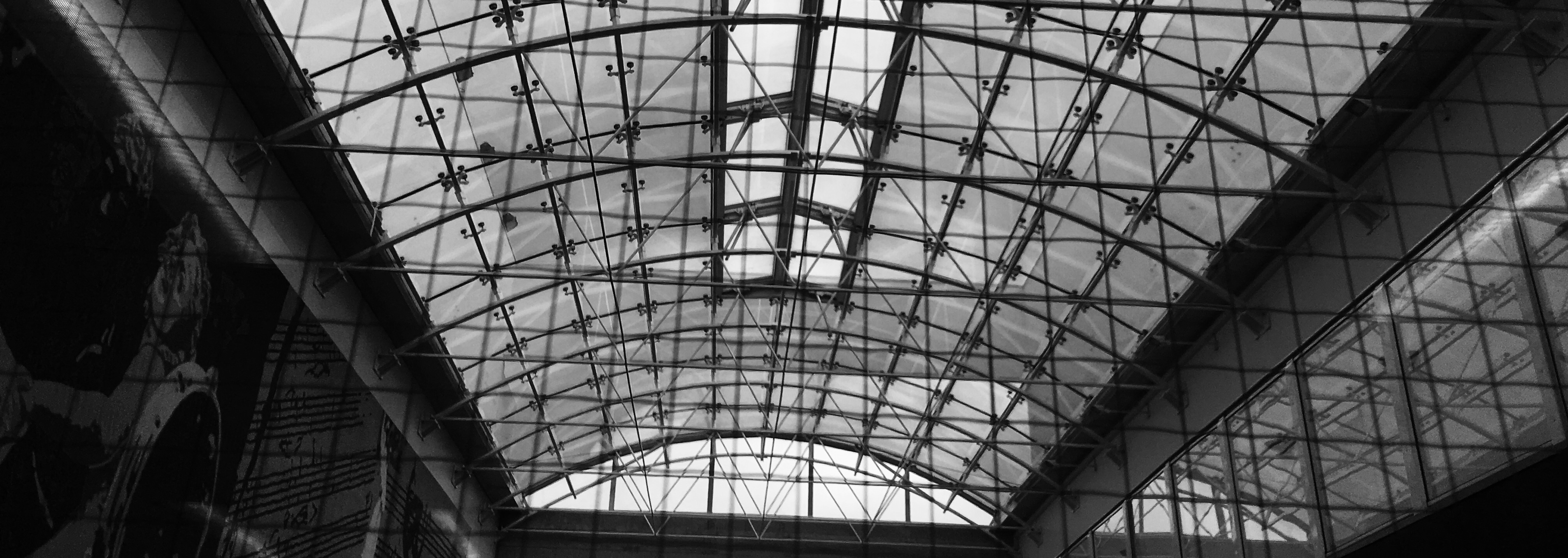Accueil > Articles > 2007 > Duchamp, du poil & Cie (en anglais)
Duchamp, du poil & Cie (en anglais)
vendredi 21 mars 2014, par
Ma participation en 2005 au colloque d’Orléans « Marcel Duchamp et l’érotisme » a donné lieu à une première publication toujours sous la direction de travail de Marc Décimo.
J’ai mis en ligne la version française ici.
Mais ce colloque a donné lieu à une publication anglaise à la Cambridge Scholars Publishing. Voici donc sa traduction.
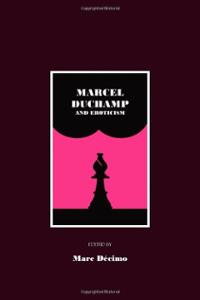
DUCHAMP, DU POIL & Cie
“Signs of dislocation are the seal of authenticity in modern art, the way in which it desperately denies the end of constant-alikeness. Explosion is one of its invariants. Anti-traditionalist energy becomes a voracious maelstrom.”
T. W. Adorno, Théorie esthétique.
For many years, Marcel Duchamp’s work was associated with asceticism or a certain kind of purification. This was probably because his rejection of the corporeal gesture in art (the hand that paints, the nose that smells the turpentine) was mistaken for a rejection of the body.
It is interesting to note this paradox in the artist and his work : Duchamp didn’t like “poils” [1], not even his own. He shaved his own body and the pubes of his female partners… One of Rrose’s many puns comes to mind : “Abominables fourrures abdominales” (abominable abdomenal fur) ; also what Lydie Fischer Sarazin-Levassor, Marcel Duchamp’s young wife, had to say on the subject :
“There was one intimate detail I found amusing. It was how carefully he inspected his body, from which all hair had been meticulously removed, looking out for the emergence of the slightest sign of down, which was instantly plucked. He had an almost pathological horror of hair. Apart from the fact that he found it dirty and ugly, it was also, he said, a crude reminder of the fact that man was, after all, nothing more than a animal, hardly more evolved. He would even have shaved his head, like the Russians in summer, but he admitted it wouldn’t be attractive. He liked the fact that my hair was cut very short, and eventually he urged me to follow his example and remove all body hair. Why not ? If it made him happy. It was a memorable session, because the product he used - very efficient, with a sulphur base - gave off a distinct smell that clung to me for at least 48 hours ! No matter how much I washed, or drenched myself in perfume, anyone could have followed me with the smell alone. The Devil straight out of Hell would have been less noticeable than I was !” [2]
Yet the human body has always been very present in Duchamp’s art. Physically or metaphysically, the artist-body is always there, flirting with exhibition ; i.e. on permanent display.
Rather than try to conduct a dualistic analysis, I will attempt to identify a dialectic path that leads us away from the well-beaten track of “the death of art” or the artist (the end of working and producing things). My aim is to show how Duchamp’s use of eroticism operated a change in modernity ; a transformation of the paradigm, a movement and a form of “subtle subversion” (to quote one of Roland Barthes’ expressions).
As we know, what Duchamp called “any old thing” (n’importe quoi) was not produced any old way or at any time at all. The expression indicates a power of reversibility that plays on contradiction, allows us to foresee traps and organise a strategy of avoidance. In chess, it’s called a gambit. It is in this sense that the problematic of the ‘poil’ in Duchamp’s work opens up a complex erotic fissure, an oblique and delayed movement, a gap into which the shadow of Rrose Sélavy constantly sashays, lest we forget her.
Before delving more deeply into L.H.O.O.Q., which raises many historical and aesthetic questions, it is worth looking back on the specific role of body hair in the history of art and representation, in order to highlight its subversive aspects as well as its importance in modernity.
From ‘poils’ in general to modern art in particular
The French word ‘poil’ describes any of the various fine flexible keratinized filaments that grow from beneath the skin (especially on the head). The different types in this system have given rise to a powerful and varied semiology and symbolism. The multiplicity of historical and mythological sources raises issues that are individual, collective, social, political or religious, as well as controversial. Beard, moustache, not forgetting the coiffure… hair is implicated in complex issues of civilisation. It also possesses an authentic erotic dimension. Pubic hair certainly plays a decisive role because it is at the same time a means of identification and a stimulus : it is both an optical indication and a sign of corporal development, of sexual maturity.
But in more general terms, the French word “poil” has a strongly negative connotation because it evokes the animal. It was this bestial aspect of the body that led Georges Bataille to say, for example, that “man and woman are generally deemed beautiful to the extent that their forms are dissimilar to the animal’s. (…) The beauty of a desirable woman evokes her shameful parts : the parts covered with hair, her animal parts. Our instinct makes us desire these parts of the body. But unlike this sexual instinct, erotic desire responds to other criteria. The negating beauty of bestiality, which awakes desire, results in its exasperation and the exaltation of the animal parts.” [3]
Bataille’s guilty and sinful eroticism bears the mark of rejected bestiality and mortified sensuality. For in Christian tradition, hair is associated with bestiality : from the Beast to beasts, from beasts to “bêtise” (which in modern French means silliness). The sensuality associated with hair is marked by sin or weakness. Hair represents a return to the animal state. It designates a corporality that cannot escape its primitive nature, that is to say its animal nature. Léo Steinberg, investigating the representation of Christ’s sex in Renaissance painting, does not directly raise the question of the absence of body hair in representations of Jesus. But he attempts to underline the liturgical signification of such representation : “the consequence God’s humanization is that he assumes a sexuality, in the same way as he assumes mortality. (…) The truth of the Incarnation having been celebrated, the sex of the new-born is a demonstrative sign (…) Delivered from sin and shame, the freedom with which we are shown Christ’s sexual organ evokes the primitive innocence lost by Adam. We might say that naked figures of Christ – on the Cross, dead or risen - are, like the Jesus-Child in his nakedness, not shameful, but perfectly and literally shame-less.” [4] This is an Adam who had not yet discovered Eve’s sexual nudity, a man who had never seen her pubic hair. So, responding to “the human body conceived as a hierarchical system” [5], Christ’s trunk and genitals, when visible, are hairless ; while the iconography of the Devil shows a creature covered with rough, shaggy locks. Western pictorial tradition has inherited this dualism by effacing all traces of pubic hair and even sexual organs (as in representations of Adam and Eve for example). This is the tradition of a sex without pubic hair, a male sex in it’s simplest organic form and a female one without vulva or hair.
Modernity reverses that tradition and changes the conventions that govern the representation of the body. At first, it is the awareness that models have lost their authority that fires modern thought as it turns away from idealized forms. Baudelaire’s modernity challenges the regulated minds of his times by introducing daily life, banality, ugliness, sexuality and the absence of redemption into his poetic universe. Head and body hair are the signs of an aesthetic revolution and scandal.
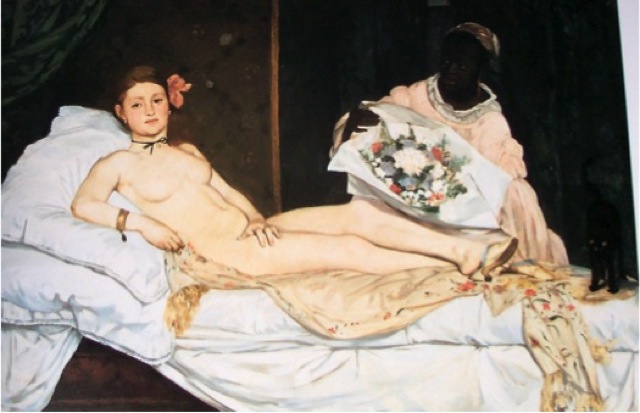
1863 probably marks the most outstanding event in the furore. [6] Manet’s Olympia, painted that year and presented at the salon in 1865, heralds a new artistic form, in which “painting became simply the art of the painter, without any other signification” [7]. At the time when the work was causing a scandal, Baudelaire wrote to Manet, “Vous n’êtes que le premier dans la décrépitude de votre art” (“You are simply the first in the decrepitude of your art”) This is the difficult but essential role of modernity. Rather than aspirations to harmony and perfection, it offers artistic statements that are fragile and audacious, in a world emptied of all idealization. The “decrepitude” Baudelaire refers to is that of a body, offered in its nakedness, with all the sensual imperfections of flesh, keeping its secrets while compelling our gaze. The body is here and now. It no longer belongs to any idealized scene of Greek inspiration, or from the distant mythological past. (Comparisons might be made with other contemporary nudes like La Source, which Ingres began in 1820 and finished in 1856, or Cabanel’s Naissance de Vénus in 1863). What scandalizes in Manet’s painting is the presence of an ordinary, everyday body that the spectator can recognise as such. The model’s sex may be casually hidden by a suggestive hand, and the black cat may be a metaphor of abundant pubic hair, but these phantasms and projections are not the subject of interest : this new nudity displays underarm hair, painted by Manet. This shockingly “realistic effect” underlines the passage from the nude to nudity, as Alain Roger put it. In other words, this is a radical subversion of the ideality of “The Nude (artistic concept) as an aesthetic relation to nudity (natural concept).” [8] The mythological nude painted by someone like Cabanel becomes irrelevant next to this arrangement of flesh that directs the spectator’s eye to a representation of a woman’s body, whose humanity is accentuated even by the most prosaic details. Here, nudity scandalizes bourgeois values based on conformity and the idealized, harmonious presentation of form. Manet’s contemporaries were also upset by the realities and imperfections represented in Courbet’s paintings, those of a world now emptied of its ideality : Jo, the model in Femme nue au chien (1861-1862), or La femme à la vague (1868), two paintings that place the spectator in front of a de-idealized image of imperfect and chubby flesh with the everyday ordinariness of naked feet, blackened with dirt, and abundant red hair under her arms. Hair is the scandalous indication of a living, organic body [9].
It is in this sense that Marcel Duchamp’s work is heir to a pictorial evolution, not in his painting but in the spirit of revolt that fired those artistic creations. The theme of hair is constantly present in Duchamp’s œuvre and it always stresses a subversive and erotic dimension (in the plastic, aesthetic and ideological sense).
Marcel Duchamp & a few adventures with “poils”
Before considering the importance of “poils” in Duchamp’s work as a form of modernity and a means of investigating the erotic nude, let us place ourselves under the auspices of Rabelais, and recall the polysemic definition of the word “coquecigrue” which appears in Gargantua (chapter 49) and Pantagruel (chapters 11 and 12).
First of all, the “coquecigrue” is a rhetorical image representing an absurdity or a fatuous remark (referring to jokes and significations which are perceptible beyond what is visible).
But a “coquecigrue” also means a chimerical animal. (How can we fail to think of Rrose Sélavy, and the fundamental role she plays in the “poils” theme in Duchamp’s work ?) But here, we are not referring to that precise creature - a cross between a lion, a goat and a dragon. Here, the word evokes a strange and hazy concept more resembling a legend, if we recall that légende (legenda) signifies “what must be read”, just as Rrose’s wordplay has to be read.
Lastly, in Rabelais, “coquecigrue” means the female sexual organ.
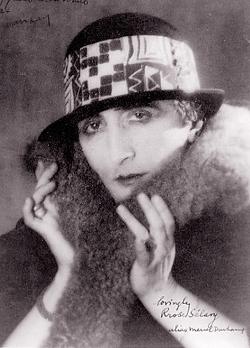
Representation of the body and the sex provides the framework for a large part of Marcel Duchamp’s creation. From the first paintings to the last actions and installations, we could make a long list of works within which “poils” occupy a unique place. This list would allow us to observe a double (even a triple) presence : the representation of hair (playing on its presence or absence), the material presence of hairs (and their metaphorical representation). Hair plays a decisive role in Duchampian erotism because it indicates a tension and a reversibility between what is shown and what is hidden, i.e. between the form and its reverse side (rather than the form and its opposite - a question of dialectics, not dualism). Georges Didi-Huberman speaks of an “imbrication of the form and its counterform that is always erotic” [10]. In Duchamp’s work, we find this oscillation between the presence and absence of hair (from a head of hair to pubes, from the representation of body hair to its absence, from real hairs to their representation). This indicates anguish, perhaps aporia ; in any case an enigma concerning the nude and nudity that is a constant object of attention. But in Duchamp’s oeuvre, what “poils” express above all is the Dada spirit. Manet’s and Courbet’s paintings show the desire to break with taste, good taste, formal beauty and harmony. The energy of Dada and the new artistic relations it creates undermine tradition and the aesthetic foundations of Art. The spirit of reversal, questioning, and subtle subversion that marks Duchamp’s work belongs to Dada contestation and insurrection. It is a strong protest against established values and cultural conventions, a decisive move toward bad taste, or, more exactly, the absence of taste. Finally, its anti-dogmatism causes the Dada movement to be less of an “ism” and more of a free, libertarian form of modernity. It is in this sense that Duchamp’s “poils” underlines the spirit of insubordination so characteristic of Dada.
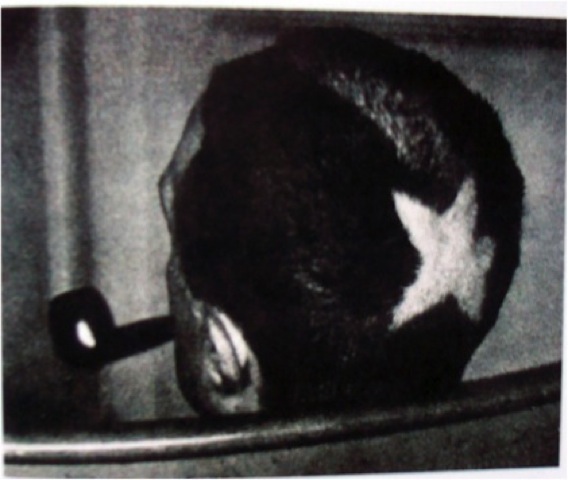
We could find hundreds of instances in Duchamp’s work to justify these remarks. But even if we stick largely to the emblematic L.H.O.O.Q., it is nevertheless necessary to suggest some avenues for future exploration, beginning with the relation between the comet-tonsure and the birth of Rrose Sélavy in 1921 (as well as the central role photography played in all this).
We may also think of Adam/Duchamp’s false beard or the one Eve shyly conceals in Relâche. This film sequence made in 1924, later to join Morceaux choisis (1968), is related the plaster moulds of the fifties, e.g. Feuille de vigne femelle (1950, Female Fig Leaf), which also has a rapport with L.H.O.O.Q. rasée, Rrose and Given. We might also mention the identity of the foam-covered faun that appears in Monte Carlo Bond [11]. Or Rrose’s puns, which are full of allusions to hair, or Duchamp’s various disguises… all so many indications of his Dadaist spirit. It is this spirit that permeates the friendship between Marcel Duchamp and Francis Picabia, and we find throughout the adventure of the erotic emblem, L.H.O.O.Q., a work described by Marcel Duchamp himself as follows : “That Joconde with a moustache and a goatee is a readymade combination/iconoclastic Dadaism. The original, I mean the original readymade, is a cheap 8 x 5 inch chromo, on the back of which I wrote four (sic) initials that, pronounced in French, produced a daring joke about La Joconde.” [12]
Duchamp’s creation interrupts the circulation of an image that had become emblematic and sacred. He attacks both a revered object and the respect for tradition. Firstly, he passes from the sacred to the profane via a certain profanation ; secondly, he redirects Leonardo’s iconic picture, and with it all “retinian” art, but the objects of his transgression are very ordinary (an industrially produced reproduction, a piece of cloth, a playing card and a stamp). The objects are profane, ordinary, and Duchamp’s “gesture” makes them a challenge to the sacred character of the image.
But what exactly did Duchamp do ? He drew a moustache and a goatee on a reproduction of La Joconde, then gave a title to the new picture and signed it. Duchamp places Leonardo’s work at a distance by making an artistic statement in the form of a pun, a title, a phonetic play on words that develops the visual joke. Enunciating the title is as important as the iconoclastic act, because it questions the foundations of art as much as the Dadaist gesture which itself is rooted in art. In Duchamp, the idea takes precedence over everything else, thumbing its nose at beauty with unreserved irony. The “coquecigrue” L.H.O.O.Q. is a chimerical being. With this drawing and its title, which converge in the evocation of “poils”, Duchamp questions sexuality.
But it doesn’t end there. Apart from the many prolongations in Duchamp’s work, the ramifications of L.H.O.O.Q. reveal the friendship between Duchamp and Picabia and their artistic likemindedness. It is important at this stage to establish who was the creator of the pun, not only in order to discover the depth of their relation but also to define the aesthetic implications of the title for Duchamp.
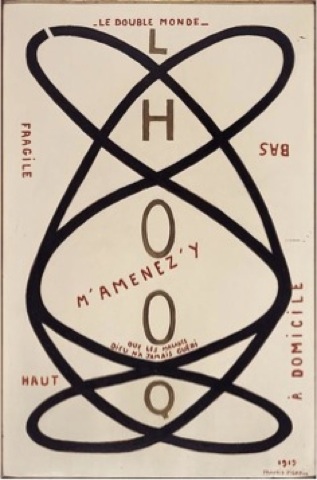
The original authorship of L.H.O.O.Q. has been discussed at length and the absence of a decisive source has invited a wealth of hypotheses. When Duchamp came back to Paris in 1919, he went to stay with Picabia, and frequented the group of young French Dadaists. In 1919, Duchamp produced L.H.O.O.Q. while on January 23, 1920, Picabia exhibited Le double monde, which bears the inscription “LHOOQ”. On March 27-29 that same year, issue n° 12 of Picabia’s review 391 appeared, with Duchamp’s L.H.O.O.Q. on the cover.
Michel Sanouillet believes Picabia to be the creator of the pun [13]. The author of Dada à Paris reminds us that Le double monde was finished in 1919 when Duchamp was living with Picabia. L.H.O.O.Q. appeared in those days, under the influence of Picabia. Both Marc Le Bot [14] and Timothy Binkley [15] support this idea but the American author combines the different versions. As for Fernand Drijkoningen [16], he believes that Picabia is quoting Duchamp but the fact that he mixes up the dates weakens his argument somewhat.
On the other hand, Robert Lebel [17] and Carole Boulbès [18] believe Duchamp is the author of the pun. I will accept their hypothesis, for several reasons. Picabia’s poetry, anterior and posterior, is not inspired by a play on phonetics. Only Le Ratcirculaire (January 1920) and Tabac (1924) [19] mention Le double monde. There is no influence of the poetry of sound or phonetics which he must have encountered during his stay in Zurich in 1918. Moreover, 391, which reveals Picabia’s evolution almost immediately, shows that he has not developed in that direction.
Duchamp’s work, on the contrary, has been rooted in the problematic of language since its early stages : the Boîte verte and “les mots premiers”, the readymades and linguistic manipulations. But it is above all the birth of Rrose Sélavy in 1920 that pleads in favour of Duchamp. Rrose appears on the artistic scene for the first time in L’Œil Cacodylate with wordplay “PI QU’HABILLA RROSE SÉLAVY”. This play on Picabia’s name underlines how close the two men were and strengthens the idea that Duchamp pursued his exploration of language, deepening it in each of his subsequent works. Finally, the cover of the 12th issue of 391 seems to settle the matter in favour of Duchamp… but in a very Dadaist manner. This is probably where the “rebrousse-poil” (against the grain of established habits) effect takes on all its energy.
Francis M. Naumann has written some decisive pages about L.H.O.O.Q., especially an article that was published in issue n° 3 of the review Étant donné [20]. The following remarks owe much to him. They are a modest attempt to develop certain aspects of the “poil” theme by analysing different stages that are, in reality, so many branches of Duchamp’s art.
First stage : The creation of L.H.O.O.Q. by Marcel Duchamp in 1919.
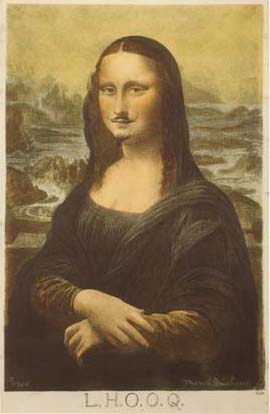
Second stage : The cover of the review 391 by Francis Picabia. On March 27-29, 1920, issue n° 12 appeared. On the cover, LHOOQ with the words “Tableau Dada par Marcel Duchamp” (Dadaist work by Marcel Duchamp) [21]. Picabia, who had previously asked for Duchamp’s permission, seems to have remembered Duchamp’s work imperfectly because his “Joconde” sports only a moustache. This is a first variation. Deliberate or not, what we have is another rectification of a readymade already rectified by Duchamp. The reproduction of the reproduction becomes a new production (a new non-production). Picabia’s real-fake reproduction increases the irony of Duchamp’s act. It also prolongs its subversive message and develops Duchamp’s taste for alteration, chance, forgetfulness and dysfunction, as well as deepening the complicity between the two men. One final graphic and typographical observation allows us to highlight the link that was established between the two artists. As well as forgetting the goatee, Picabia did not put periods between the letters. We observe this absence of periods again in Picabia’s Le double monde. Marcel Duchamp systematically respected this omission in the Picabia copies discussed in the fifth stage. At this point, I would like to present a hypothesis : that the periods indicate viewpoints (Duchamp’s and Picabia’s). The period is the precise contradiction, the reversal of a point of irony, rhetoric nonsense (a punctuation mark invented by Alcander de Brahm to point out ironic passages or sentences in a text. This definition is confirmed by the Larousse of the 20th century, 1932). The blinking of the dots in L.H.O.O.Q. could be the authentic sign of Dadaist irony from the two conspirators.
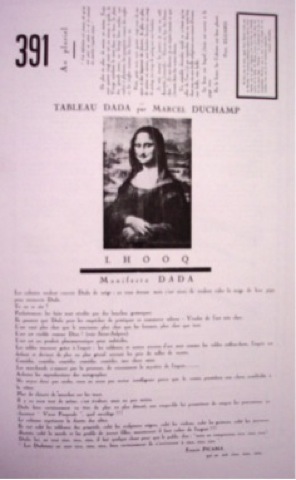
Third stage : Let us consider the variations of L.H.O.O.Q. made by Duchamp himself.
In 1930, at an exhibition of collages entitled La peinture au défi (March 1930) organized by Aragon for the Goemans Gallery in Paris, Duchamp offered a second version of L.H.O.O.Q., this time not on a postcard but on a colour reproduction of La Joconde (65x48cm).
In 1955 appeared L’envers de la peinture, a rectified readymade consisting of a dishcloth bearing a reproduction of La Joconde by Da Vinci. Duchamp adds a moustache, a goatee, a painter’s palette and brush (73x43cm).
In September 1964, Duchamp agreed to make a new version of L.H.O.O.Q. to accompany the publication of a limited edition of Marcel Duchamp, propos et souvenir by Arturo Schwarz. Paul B. Franklin tells us that Duchamp “drew a beard and a moustache with a pencil on another reproduction of the Mona Lisa, covering the words printed in the bottom left-hand corner with gouache, and adding the title, also in pencil, bottom centre, underneath the printed title of Da Vinci’s painting. Duchamp signed 35 copies of this new readymade, and one was inserted in each numbered volume of De Massot’s book ; three other signed but not numbered versions of the readymade accompanied volumes reserved for the artist, the author and the publisher”, [22].
Fourth stage : In 1941, Marcel Duchamp illustrates a poem with a stencil of La moustache et la barbe de LHOOQ, which serves as the frontispiece of a poem by Georges Hugnet entitled Marcel Duchamp.
Fifth stage : Marcel Duchamp finds Francis Picabia’s “copies”.
It was Jean Arp who owned the “copy” of L.H.O.O.Q. by Picabia. When he found it in Arp’s studio, he did not hesitate to add the forgotten goatee, and the following note : “Moustache by Picabia and beard by Duchamp” [23].
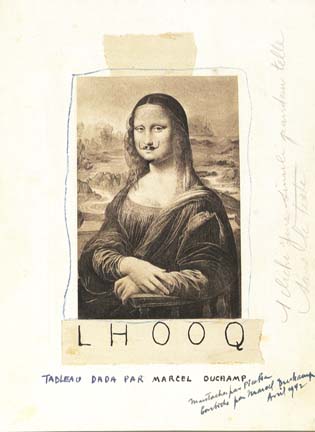
But Jean Arp must have possessed a second drawing of the “copy” of L.H.O.O.Q. [24] because another version of a whiskered Joconde by Picabia, dating from April 1942, has come to light. Duchamp didn’t add anything to this one. Mona Lisa has a moustache but no beard. Yet we can wee some Duchampian additions : under the drawing, around the caption, the letters “LH” to the left of the caption and the letters “OQ” to the right. The first “O” has been slipped under the caption (an indirect graphic reference to Picabia’s painting). Then the name “MARCEL DUCHAMP” is written in capital letters. Lastly, in the right hand corner, Marcel Duchamp has written, above his signature, “Pour copie non-conforme” and the date “avril 42”.
This new stage of the work definitively “signs” their long friendship in a re-re-rectification of the readymade. It is divided into two variations of the absent work of Da Vinci, with and without the beard. Here, the problematic of copying and reproducing a work is developed in a decisive manner.
Sixth stage : In 1965, Marcel Duchamp shuffles his cards and deals a new hand with L.H.O.O.Q. rasée. This time the work is a playing card (8,8 x 6,2 cm) mounted on paper (21x13,8 cm). Printed in about a hundred copies, it serves as an invitation card to an exhibition entitled “Not seen and/or Less seen of/by Marcel Duchamp-Rrose Sélavy 1904-64, Mary Sisler collection” in the Cordier and Ekstrom gallery in New York, January 1965. Once again the link between L.H.O.O.Q. and Rrose Sélavy is confirmed in the title of the exhibition, as well as in the play on the presence or absence of the beard. From the title to the Mona Lisa appearing without moustache or beard (which certainly heralds Given : 1) The Waterfall, 2) The Illuminating Gas), the erotic aspect is yet again structured around a reversibility that creates a new separation. Even if all the transformations and different versions of L.H.O.O.Q. are echoed here, Duchamp also ironizes on the question of reproduction by giving the Mona Lisa her original face. The inscription/title proves once again that Da Vinci is not the issue in this new elaboration of the “poils” theme ; the point is to reverse the visual appearance of images on consumer goods. It is also an implicit criticism of certain forms of contemporary art, like Warhol’s tendency to use a more limited number of cultural signs.
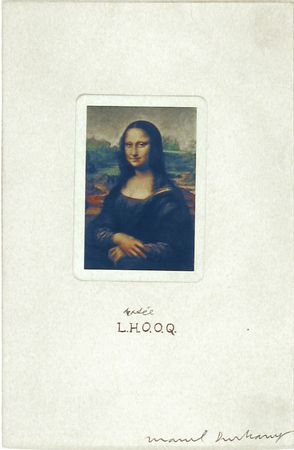
Seventh stage : Towards 1967, Marcel Duchamp made his next version in an act of friendship for Monique Fong. She tells Paul B. Franklin how it happened [25] :
“It was almost by chance. My husband collects stamps. One day he was relaxing, looking through his album when he noticed a German stamp without a postmark, a special issue in homage to Da Vinci to mark the five hundredth anniversary of his birth (1952). He had got to know Duchamp better since we moved to New York ; so, looking at the stamp, he thought of L.H.O.O.Q. and he had the brilliant idea of asking him to sign it. So we stuck the stamp onto a piece of board and took it to him. Duchamp signed it with a ball-point pen “Pour Monique/Marcel Duchamp”. I put it in a funny sort of laboratory frame I had found in a bric-a-brac, and there you are.”
An intermediary stage and another hypothesis : In 1946, a year when some ‘poils’ appeared in Boîte-en-valise (numéro XIII/XX), Duchamp made a Boîte-en-valise for Matta. Into it, he put an “enigmatic infraslim portrait made up of just a few tufts : some hair on the top, armpit hairs in the middle, pubes at the bottom, all stuck on to the underside of a piece of transparent Plexiglas with sticky tape” [26]. As well as the associations with Large Glass (the capillary tubes) or the 1941 stencil, it is also important to mention the presence of real hair in Duchamp’s work, and not simply photographic images or drawings on photographs. This final creation irrefutably dismisses the idea of purification we evoked at the beginning. Lastly, the infraslim portrait reminds us of the dream of a Duchamp transformer as described below :
Transformer intended to use up wasted bits of energy, such as :
“excessive pressure on electric buzzers ;
the exhalation of cigarette smoke ;
the growing of hair, body hair, and nails ;
the fall of urine and excrement ;
movements of fear, astonishment, boredom, and anger ;
laughter ;
the dripping of tears ;
demonstrative motions of the hands and feet, tics ;
sour looks ;
arms dropping to one’s side ;
stretching, yawning, sneezing ;
spitting normally and spitting blood ;
vomiting.
ejaculating ;
unwanted hair, tufts ;
the sounds of nose-blowing and snoring ;
fainting ;
whistling, singing ;
sighing, etc. …” [27]
We may well wonder what lies behind all this transparent reference to hairs when in 1946 Duchamp starts work on Given, conspicuous for the absence of pubic hair, though it may be contaminated by Rrose’s wordplay : “Question d’hygiène intime : Faut-il mettre la moelle de l’épée dans le poil de l’aimée ?” [28]. This wordplay was first published in Le Cœur à Barbe in 1922, then in a collection in 1939, Rrose Sélavy, surtitled “Oculisme de Précision” and subtitled “Poils et coups de pieds en tous genres” (Hairs and kicks of every sort). In each and every one of Duchamp’s “gestures” lies its counter-form and an echo of its potentiality. It is in this sense that the theme of “poils” constitute a nod in the direction of all Duchamp’s “coquecigrue” : wordplay, chimera and vulvae.
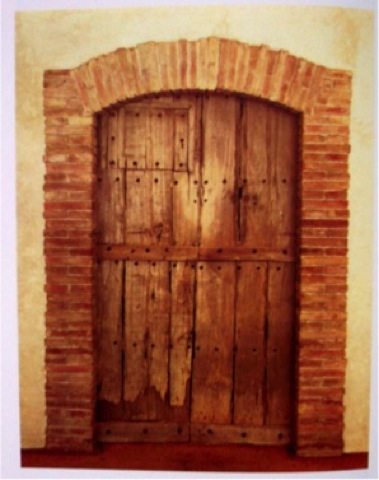
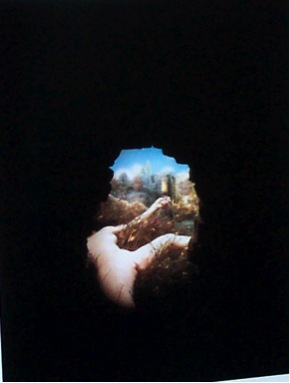
[1] Whereas the English word hair (countable and uncountable) may refer to head hair or body hair, the French noun poil(s) (countable) usually refers to body hair, or that of an animal, but also to the bristles of a brush, etc.
[2] Lydie Fischer Sarazin-Levassor, Un échec matrimonial, le cœur de la marié mis à nu par son célibataire même (Dijon, Les presses du réel, 2004) p.69-71.
[3] Georges Bataille, L’érotisme (Paris, Éditions de Minuit, 1995) p.159. Cf. traduction of Mary Dalwood (San Francisco, City Lights Books, 1986)
[4] Léo Steinberg, La sexualité du Christ dans l’art de la Renaissance et son refoulement moderne, (Paris, Gallimard, 1987) p. 42. Cf. The Sexuality of Christ in Renaissance Art and in Modern Oblivion, New York, A Pantheon/October book, 1983.
[5] Idem, p. 175)
[6] A more complete analysis would no doubt allow us to evoke other examples, Degas or Toulouse-Lautrec (and even Caillebotte, as Philippe Dagen points out). Here, my aim is to select broader lines for analysis and development.
[7] Georges Bataille, Manet (Paris, Éditions Albert Skira, 1994) p.35.
[8] Alain Roger, Nus et paysages, (Paris, Aubier, 1978) p.56.
[9] In 1830, La Liberté guidant le peuple by Delacroix also showed underarm hair but in an ambiguous and allegorical context. I will not discuss Courbet’s L’origine du monde here ; since it was long hidden from view by its owners, as pointed out by Bernard Teyssèdre in Le roman de l’origine (Paris, Gallimard, 1996).
[10] Georges Didi-Huberman, L’empreinte, (Paris, Éditions du Centre Georges Pompidou, 1997) p.159.
[11] Marcel Duchamp, his head covered with foam shaped into two little horns.
[12] Marcel Duchamp, Duchamp du signe, op. cit., p. 227.
[13] Michel Sanouillet, Dada à Paris (Paris, Flammarion 1993), note 60, p.152.
[14] Marc Le Bot, Picabia et la crise des valeurs figuratives, Klincksieck (Paris, Collection “le signe de l’art”, 1968) p.173.
[15] Timothy Binkley, “Pièces : contre l’esthétique” translated from the English by Danielle Lories in Esthétique et poétique, articles selected by Gérard Genette (Paris, Le Seuil, collection Point-essais, 1992) p. 56.
[16] Fernand Drijkoningen, “un tableau-manifeste de Picabia : le double monde”, in Avant Garde II, Marcel Duchamp, Amsterdam, 1989, p.100.
[17] Robert Lebel, Sur Marcel Duchamp, (Paris, Belfond,, 1985) note 1, p.91.
[18] Carole Boulbès, Picabia, le saint masqué, (Paris, Jean-Michel Place, 1998) p.32.
[19] Francis Picabia, Écrits, textes réunis et présentés par Olivier Revault d’Allonnes et Dominique Bouissou (Paris, Belfond, Tome I, 1975 ; Tome II ,1978). Le ratcirculaire in Tome I, p.187 and Tabac in Tome II, p. 141.
[20] Francis M. Naumann, “L.H.O.O.Q. de Marcel Duchamp : la fabrication d’une réplique originale”, (Étant donné Marcel Duchamp, n° 3, October 2001) p.149-150.
[21] Francis Picabia, 391, repr. Presented by Michel Sanouillet, Terrain vague. (Paris, Losfeld / Pierre Belfond, 1975) p. 79.
[22] Paul B. Franklin, “Portrait d’un poète en homme bi : Pierre de Massot, Marcel Duchamp et l’héritage Dada”, in Étant donné donné Marcel Duchamp, n° 2, 2000, p. 66.
[23] Quoted in Michel Sanouillet, Picabia et 391, Le terrain vague. (Paris, Éditions Losfeld, 1960) p.113. “In a book shop, many years later, Arp discovered by chance his reproduction of La Joconde rectified by Picabia ; when he ran into Duchamp again later, he showed it to him. Duchamp drew the missing beard and wrote at the bottom : Moustache by Picabia, beard by Marcel Duchamp”. In A. Schwarz, The Complete Works of Marcel Duchamp, (New York, Harry N. Abrams, revised edition, 1970) p. 476… quoted by Francis M. Naumann, L’art à l’ère de la reproduction mécanisée, (Paris, Hazan, 1999) p.25.
[24] Francis M. Naumann in his article “L.H.O.O.Q. de Marcel Duchamp : la fabrication d’une réplique originale” confirms the existence of two copies, casts doubt on the book shop story and provides (hypothetical) circumstances of the acquisition of two versions by Jean Arp : “In spring 1942, in order to escape the German troops, Arp travelled from his home in Grasse to Paris in the boot of Jeannine Picabia’s car. Jeannine was Francis Picabia’s daughter and it may be through her that Jean Arp discovered and acquired the two versions of L.H.O.O.Q. by Picabia”. Francis M. Naumann, “L.H.O.O.Q. de Marcel Duchamp : la fabrication d’une réplique originale”, in Étant donné Marcel Duchamp, n° 3, October 2001, p.149-150.
[25] Paul B. Franklin, “Conversation avec Monique Fong” (Between March 1999 and March 2000), Étant donné Marcel Duchamp, n°3, October 2001, p. 10.
[26] Georges Didi Huberman, L’empreinte, (Paris, Édition Centre Georges Pompidou, 1997) p.170 (p.174 for the reproduction) or Marcel Duchamp, Work and life, edited and introduced by Pontus Hulten, texts by Jennifer Gough-Cooper and Jacques Caumont, (Massachussetts, The MIT Press, Cambridge) p.143.
[27] André Breton, « Marcel Duchamp », dans Anthologie de l’humour noir (Paris, Sagittaire, 1940) p.225. Translation by Mark Polizzotti, (San Francisco, City Lights Books, 1997) p.281.
[28] Elmer Peterson Offers an inspired translation of this most famous of Rrose’s puns : “Question of intimate hygiene : Should you put the hilt of the foil in the quilt of the goil ?” The Writings of Marcel Duchamp, Edited by Michel Sanouillet and Elmer Peterson, Salt Seller, (New York, Oxford University Press, 1973).
